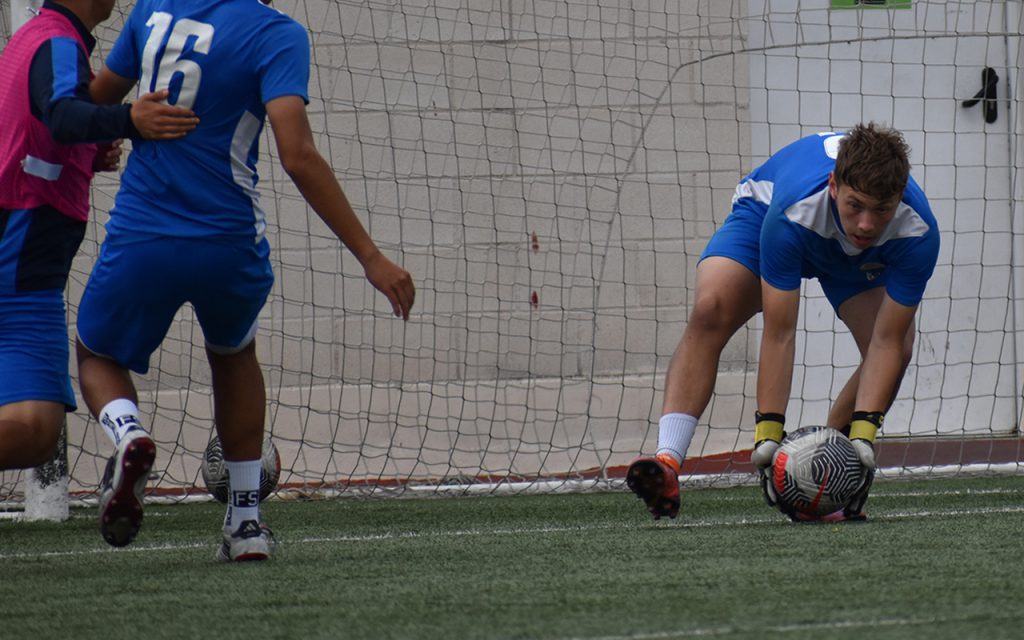If you look at some of the best teams in history, there’s one thing they often have in common: the voice of the goalkeeper anchoring everything from the back. Understanding how goalkeepers can become leaders is not just about making big saves—it’s about being the player others instinctively trust when things get chaotic.
Leadership isn’t only about shouting or looking intense. It’s built on smart communication, consistency, and calmness under pressure. And it’s a huge part of elite development plans, especially inside goalkeeper training programs that are built to develop full field generals, like those included in top training camps in Spain, such as those at IDA Valencia.
Let’s dive into the traits, habits, and mindset shifts that can turn any keeper into a true leader on the pitch. 🧠⚡
Table of Contents
- Leadership Starts With Presence, Not Just Performance
- Core Skills Goalkeepers Need to Lead
- How to Build Leadership as a Young Goalkeeper
- Mistakes Young Goalkeepers Make When Trying to Lead
- Pro Goalkeepers Known for Leadership
- Quick Leadership Boosting Drills for Keepers
- Leadership Is a Choice, Not a Title
Leadership Starts With Presence, Not Just Performance
It’s easy to think that just making saves earns you leadership status. And while shot-stopping is critical, presence is what builds trust with defenders.
🔑 Presence means:
- Organizing before problems happen
- Talking clearly and constantly
- Staying composed after mistakes
- Owning your penalty box
If your defenders feel you have control, they’ll play with more freedom—and the whole team benefits.
Core Skills Goalkeepers Need to Lead
Being a goalkeeper leader isn’t magic. It’s mastering a set of skills most players overlook. Let’s break them down:
📣 1. Effective Communication
Leadership demands constant information-sharing:
✅ Early and loud calls (“Man on!”, “Turn!”, “Keeper’s ball!”)
✅ Clear organizing before set-pieces
✅ Immediate feedback after plays, positive or corrective
Great keepers speak before things happen, not after mistakes are made.
🧠 2. Game Understanding
Knowing the flow of the match helps you direct your team better. A smart goalkeeper:
- Spots gaps in the defensive line early
- Reads opposition tactics
- Adjusts teammates’ positioning during transitions
Leadership is easier when you’re always two steps ahead mentally.
💪 3. Calmness Under Pressure
When the game gets frantic, the team looks to you.
✅ Stay composed after goals conceded
✅ Keep energy positive after defensive errors
✅ Rebuild momentum through actions and words
The calmer you are, the calmer your defenders stay, and that’s huge.
How to Build Leadership as a Young Goalkeeper
You don’t have to wait until you’re 25 to lead. Even young keepers can set the tone for their teams by practicing these habits:
🗣️ 1. Be the Loudest (but Smartest) Voice
Talk all game long, but make your words useful.
Bad: Screaming random instructions every five seconds.
Good: Clear, short commands that direct and support teammates.
Example:
- “Step!” (push line higher)
- “Hold!” (stay compact)
- “Inside!” (force play inward)
Quality over quantity wins respect.
🔎 2. Own Your 18-Yard Box
If a ball is in your area, it’s your world.
✅ Attack crosses with authority
✅ Claim loose balls decisively
✅ Don’t hesitate in 50/50s
When defenders know you’ll back them up, they trust your calls—and each other.
🛡️ 3. Celebrate and Correct Constructively
Every time you support a good defensive action (“Great clearance, Alex!”) or fix positioning without blame (“Shift left, cover #9!”), you strengthen team chemistry.
Leadership isn’t just barking orders—it’s building teammates up too.
Mistakes Young Goalkeepers Make When Trying to Lead
Even with good intentions, some behaviors backfire:
🚫 Constant yelling even when unnecessary (creates white noise)
🚫 Blaming defenders after conceding
🚫 Giving up communication when frustrated
🚫 Acting cocky after a few good saves
Real leadership is consistent, humble, and team-focused, not self-centered.
Pro Goalkeepers Known for Leadership
Want some real-world examples?
- Manuel Neuer – Controls Bayern Munich and Germany’s backline like a general.
- Gianluigi Buffon – Legendary communicator, calm under pressure, a true captain.
- Hope Solo – Commanded the USWNT defense with authority and confidence.
- Iker Casillas – Led Real Madrid and Spain not just with saves but smart, respectful leadership.
None of these legends led by shouting only—they led by presence, knowledge, and attitude.
Quick Leadership Boosting Drills for Keepers
⚡ Command the Small Game: Play 4v4 small-sided games where you must call every switch and defensive adjustment. Practice early communication!
⚡ Pressure Communication Circuits: During goalie drills, have a coach call sudden scenario changes (“corner kick!” “counterattack!”) forcing you to organize teammates in real time.
⚡ Leadership Journaling: After games, write down moments when you successfully organized the defense—and moments where you could have communicated better. Reflect and refine.
Leadership Is a Choice, Not a Title
Learning how goalkeepers can become leaders isn’t about wearing the captain’s armband. It’s about earning trust through action, word, and presence every single minute you’re on the field.
When you lead well, you elevate everyone around you. You create order out of chaos. And you set yourself apart, not just as a good goalkeeper, but as a true game-changer.
If you want to develop these traits in a focused, professional environment designed to sharpen your tactical and leadership skills, joining a top-level goalkeeper training program where leadership is taught just like handling and diving could be the key to unlocking your full potential.
Own your box. Own your voice. Own your team. 🧤🛡️🏆




